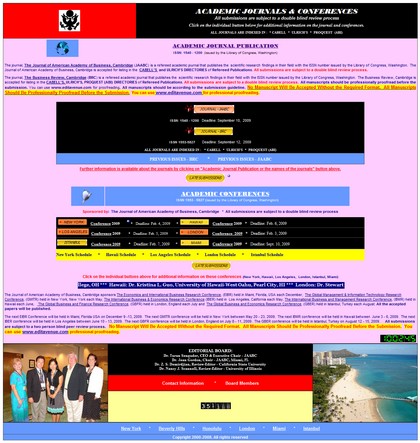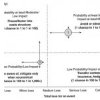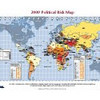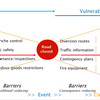 Today’s post is on how looking up new articles from reference lists can lead to amazing discoveries, and it’s quite interesting to note how one thing leads to the other…especially when you’re doing literature reviews…and usually it’s like this: You are reading some article on your main subject when you see some interesting references, which you look up, just to find even more interesting references, which you also look up, just to be led even further astray… and soon you find yourself reading something that isn’t even remotely related to – but at the same time much more fascinating than – what you were researching in the first place. No wonder I cannot get things done… That’s how I stumbled upon the Theory of Constraints, an amazing discovery that came from the aforementioned a-maze-ing discoveries (i.e. references that led me astray).
Today’s post is on how looking up new articles from reference lists can lead to amazing discoveries, and it’s quite interesting to note how one thing leads to the other…especially when you’re doing literature reviews…and usually it’s like this: You are reading some article on your main subject when you see some interesting references, which you look up, just to find even more interesting references, which you also look up, just to be led even further astray… and soon you find yourself reading something that isn’t even remotely related to – but at the same time much more fascinating than – what you were researching in the first place. No wonder I cannot get things done… That’s how I stumbled upon the Theory of Constraints, an amazing discovery that came from the aforementioned a-maze-ing discoveries (i.e. references that led me astray).
It all started here
 I’m not sure how I came to this article, because it has been on my desk for a while, but this is where it started: Polito, T. & Watson, K. (2006). Just-in-Time under Fire: The Five Major Constraints Upon JIT Practices. The Journal of American Academy of Business, Cambridge, 9(1), 8-13. I have to admit that I am rather hesitant to list this reference, since it has no DOI. Although the journal is listed with ProQuest as a refereed journal, the journal homepage looks like something out of Geocities 10 years ago, admittedly, with a Google PR6, so it cannot be too bad. However, it is not listed in my university’s register of acknowledged international scientific journals and publishers, meaning that it’s not even worth considering submitting an article there, at least not for me. Anyway, I did some quick googling of both authors and that is how I ended up with an article by the second author, Kevin J. Watson, Assistant Professor at the University of New Orleans, and that’s how I found the Theory of Constraints.
I’m not sure how I came to this article, because it has been on my desk for a while, but this is where it started: Polito, T. & Watson, K. (2006). Just-in-Time under Fire: The Five Major Constraints Upon JIT Practices. The Journal of American Academy of Business, Cambridge, 9(1), 8-13. I have to admit that I am rather hesitant to list this reference, since it has no DOI. Although the journal is listed with ProQuest as a refereed journal, the journal homepage looks like something out of Geocities 10 years ago, admittedly, with a Google PR6, so it cannot be too bad. However, it is not listed in my university’s register of acknowledged international scientific journals and publishers, meaning that it’s not even worth considering submitting an article there, at least not for me. Anyway, I did some quick googling of both authors and that is how I ended up with an article by the second author, Kevin J. Watson, Assistant Professor at the University of New Orleans, and that’s how I found the Theory of Constraints.
The Theory of constraints
According to Wikipedia, the Theory of Constraints (TOC) is an overall management philosophy introduced by Dr. Eliyahu M. Goldratt in his 1984 book titled The Goal: A Process of Ongoing Improvement. The title comes from the contention that any manageable system is limited in achieving more of its goal by a very small number of constraints, and that there is always at least one constraint. The TOC process seeks to identify the constraint and restructure the rest of the organization around it. The underlying assumption is that organizations can be measured and controlled by variations on three measures: Throughput, Operating Expense, and Inventory. TOC applications are primarily found in operations management of processing or production plants. Let’s take a brief look at the theory:
Constraints
A constraint is anything that prevents the system from achieving more of its goal. Constraints can be internal or external to the system. An internal constraint is in evidence when the market demands more from the system than it can deliver. An external constraint exists when the system can produce more than the market will bear.
- Equipment
- The production capacity of the system limits the output of goods or services.
- People
- The lack of skilled people limits the system.
- Policy
- A written or unwritten policy limits the system.
Buffers
Buffers are used throughout the Theory of Constraints. Buffers are placed before the key constraint. Buffers can be a bank of physical objects before a work center, waiting to be processed by the work center. Buffers can also be represented by time, as in the time before work reaches the constraint.
Plant types
There are four primary types of plants in the TOC lexicon. They specify the general flow of materials through a system, and they provide some hints about where to look for typical problems.
- I-Plant: Material flows in a sequence, such as in an assembly line, where the primary work is done in a straight sequence of events (one-to-one).
- A-Plant: The general flow of material is many-to-one, such as in a plant where many sub-assemblies converge for a final assembly.
- V-Plant: The general flow of material is one-to-many, such as a plant that takes one raw material and can make many final products.
- T-Plant: The general flow is that of an I-Plant (or has multiple lines), which then splits into many assemblies (many-to-many).
So far the theory, courtesy of Wikipedia. So, what about the second article?
The evolution and future direction of the Theory of Constraints
The second article,The evolution of a management philosophy: The theory of constraints, is in fact a review of the 25-year history of TOC, citing some 100 references, how TOC developed over the years, its accomplishments and deficiencies, and which main issues that marked the different eras of evolution:
- The Optimized Production Technology or OPT Era
- the secret algorithm
- 1979-1984
- The Goal Era
- drum-buffer-rope scheduling
- 1984-1990
- The Haystack Syndrome Era
- how to measure TOC
- 1990-1994
- The It’s Not Luck Era
- applying thinking processes in various topics
- 1994-1997
- The Critical Chain Era
- using TOC for project management
- 1997-2004
- The New Visions Era?
- new paradigms and thought leaders
- 2004-?
Actually, the last “Era” here are just my thoughts, after reading the article, since it actually stops at 2004. During those 25 years, TOC evolved from a
production scheduling software package to an integrated philosophy spanning numerous operations management philosophies
But it does not stop there, in the future it appears (or is hoped for by the authors, obvious champions of TOC) that
TOC is poised to transition from niche to mainstream.
This is the first time I have come across TOC as a named concept, but then again, I am not familiar with all the facets of Supply Chain Management, let alone Operations Management. Nonetheless, I have not seen any reference to TOC in the SCM or logistics textbooks I have read; the reason being, and the authors acknowledge this, is that TOC is yet to be fully accepted by mainstream academia. Wikipedia points out the critics who say that
TOC borrows heavily from systems dynamics developed by Forrester in the 1950s and from statistical process control which dates back to World War II […] several key concepts in TOC have been topics in management accounting textbooks for decades […] TOC borrows from more than 40 years of previous Management Science research and practice, particularly from PERT/CPM and JIT
So, is it just a “scam”? Or at best, old wine in new bottles?
Theory of Constraints and Supply Chain Management
The Theory of Constraints is not without applications related to supply chain management. One in particular is vendor-managed inventory. However, I would like to see more…maybe I will have to make my own?
The constraints of Just-in-Time
Back to the first article. Albeit Polito and Watson are outspoken proponents of the Theory of Constraints in other papers, it is never mentioned here, apart from listing Goldratt as a reference in the bibliography. It is kind of ironic , though, that TOC is criticized for borrowing from JIT, when JIT itself is wrought with deficiencies. Polito and Watson list these five as the five major “constraints”:
- Customer-driven conditions
- Logistics (lead times)
- Organizational culture and conditions
- Intractable accounting
- Small supplier difficulties
They explain their reasoning as follows:
- JIT does not fare well vis-a-vis shifting cutomer demands, since it assumes a reasonably stable rate of demand.Equally, JIT is not the right philosophy if a high level of responsveness or customization is required.
- JIT assumes that increases in transportation costs are offset by reductions in inventory costs. However, in order to match supply with demand, transportation costs may increase dramatically if short lead times are imperative, thus voiding the reduced inventory costs.
- JIT requires well-educated and well-trained employees. However, if one is well-educated and well-trained, one is more likely to look for other job opportunities than he blue-collar industry.
- JIT is often at odds with traditional accounting systems that are unable to measure the effects or serve as key performance indicators of JIT.
- JIT does not go well with small suppliers, who are usually less able to carry the cost of implementing JIT, and thus, charge higher premiums, in turn increasing overall costs, which is what JIT was aimed at reducing in the first place.
In conclusion, they state that JIT has its force, but also its limitations, and is not universally applicable. Being champions of TOC I would have liked to see TOC applied to solve the constraints of JIT, since TOC deals with, exactly, constraints.
Conclusion
After only knowing about it for a day or two, I must say that I am fascinated by the Theory of Constraints and I intend to find out more about it, first of all, by perusing the numerous books of Goldratt. And then, maybe, I will make my own judgment. If JIT has its applications (and limitations), so must TOC.
Reference
Polito, T., & Watson, K. (2006). Just-in-Time Under Fire: The Five Major Constraints Upon JIT Practices Journal of American Academy of Business, Cambridge, 9 (1), 8-13
WATSON, K., BLACKSTONE, J., & GARDINER, S. (2007). The evolution of a management philosophy: The theory of constraints Journal of Operations Management, 25 (2), 387-402 DOI: 10.1016/j.jom.2006.04.004
Author links
- tonypolito.com: Tony Polito
- uno.edu: Kevin Watson
- uga.edu: John H. Blackstone
- csuchico.edu: Stanley C. Gardiner
Links
- wright.edu: A lecture on the Theory of Constraints by Assoc. Prof. David Bukonvinsky (includes a PowerPoint presentation and a class example)
- book.google.com: A list of books on the Theory of Constraints












